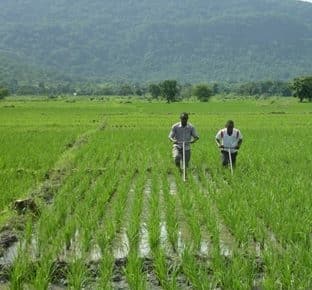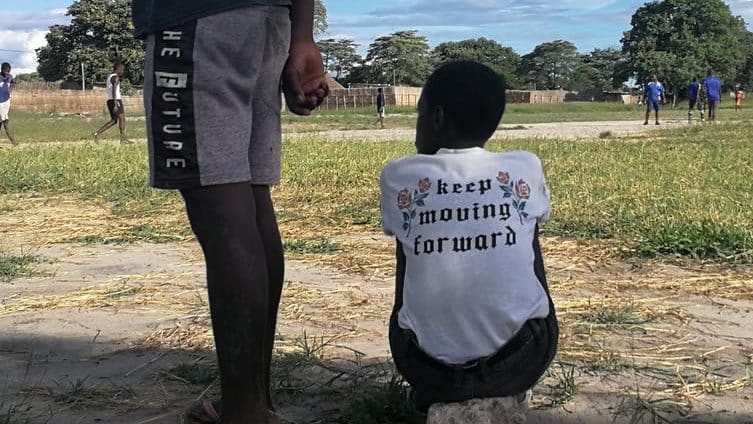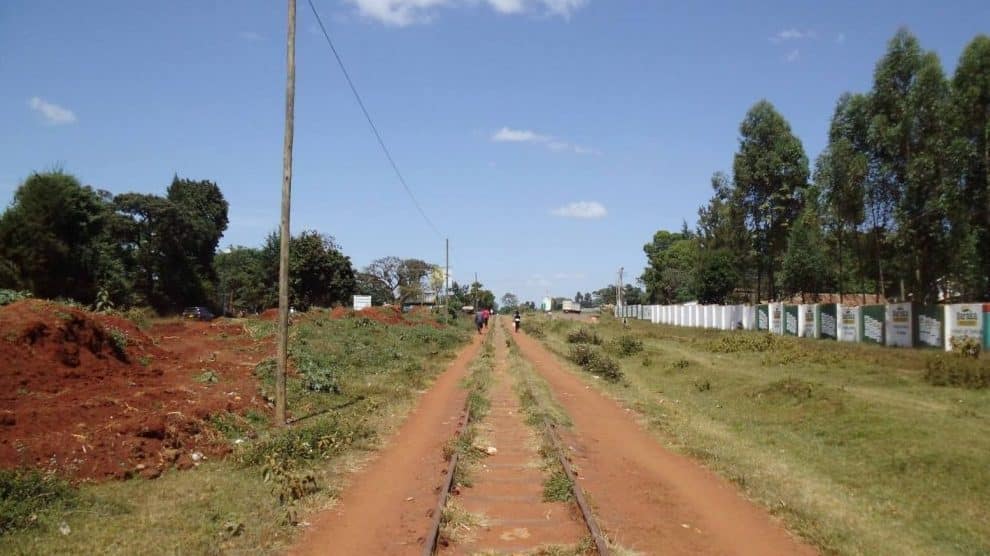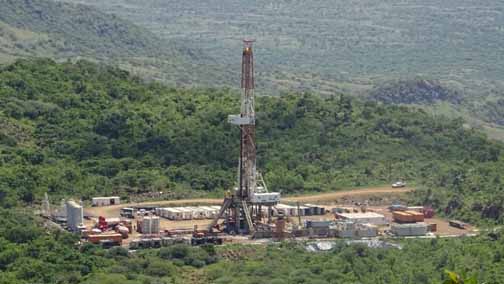Coupling refers to mutual interactions and feedbacks between ecological, social and economic elements within socio-ecological systems. The project on “Agro-Futures” (CRC Future Rural Africa, Project A03) refers to the concept of coupled agro-production systems in the Kilombero floodplain in Tanzania, where rice production within a hydrologically highly variable and socially complex environment exhibits non-linear dynamics with thresholds, feedback loops, and surprises.

Rice is the dominating crop cultivated in the Kilombero valley with a share of 80% of the arable land. Characterizing rice farming systems from a socio-ecological point of view requires consideration of societal needs (cheap and readily-available rice for consumption), expectations of rice farmers – but also from input suppliers and traders (income generation, reduced labor input, societal recognition) and socio-economic frame conditions (resource availability, technology access, pricing policies) as well as ecological attributes (spatial variability of soil quality and spatial-temporal variability and unpredictability of the hydrological regime). These attributes change, evolve and interact, and the resulting manifestations of production practices and their impact on the social and the ecological sub-systems strongly differ between production situations and among production locations within the valley.
Rice-based production systems in hydrologically-favorable fringe positions with heavy initial investments in water control (irrigation and drainage infrastructure) and mechanization (tractor tillage, combine harvesters) have evolved during the past 20 years from low-input rainfed production of traditional genotypes to modern high-input irrigated systems in few large-scale private, community-based, or state-owned schemes. Such transitions occurred under pressure of external drivers (food needs, policies, climate change, etc.) and in response to the availability of on-farm production resources (availability of land, labor and capital, access to knowledge), and the access to innovations and modern production technologies (genotypes, machinery, agro-chemicals) and training. These strongly coupled socio-ecological rice farming systems provide yields of 6-8 t/ha under intensified management, in which modern production technologies substitute for increasingly limited land and labor resources. The observed system transitions reflect a strong coupling with reciprocal influence on social and ecological factors and agronomic attributes within the sub-systems, and represent a measure of adaptive capacity and systems resilience.
However, while facing the same external pressure forces and system-immanent drivers for change, no such transitions in system attributes are apparent with the vast majority of farmers in Kilombero. In fact, most farmers in Kilombero continue to produce yields of less than 2 t/ha and continue their traditional practices that neither meet the rising food needs of the country nor the expectations and aspirations of farmers, suppliers and traders. We argue that adherence to traditional production strategies does not reflect a decoupling of the social from the ecological sub-system but rather reflects a “hidden” coupling of the social-ecological agro-production system, whereby the hinges of the coupling are more subtle and relate mainly to perceived or actual hydro-climatic and socio-economic risks. Thus, in the absence of large state investments in drainage and irrigation infrastructure, unpredictable hydrology (between years, seasons and positions), resulting in droughts and submergence events, represents a serious disincentive for farmers to invest in “modern” technology options (biophysical risk). Recurrent government interventions by importing cheap rice to maintain low consumer prices in urban centers further limit investments in more capital-intensive strategies by small-scale farmers (economic risk). Finally, in the tightly knitted social fabric of rural Tanzania, conforming to traditional practices and behaviors and avoiding “jealousy” between neighboring farmers by producing more or different products (i.e. new genotypes) (social risk).
The socio-ecological rice farming systems in the Kilombero valley are thus coupled in a dual sense: (1) On the one hand, expressions of agro-production systems and their transition towards intensification and large-scale land use change are driven by external pressure forces and the availability of production factors, and in turn affect ecological dynamics (i.e. water use soil resource degradation, water quality); (2) on the other hand, more subtly coupled social-ecological dynamics or apparently stagnating evolutionary pathways are concurrently coupled with very real hydrological risk factors but also by subjective perceptions of social and ecological risks.
We analyze multiple feedbacks within the coupled social-ecological systems of rice production in Kilombero floodplain, which are either influenced by large-scale land-use changes or by a stasis in system evolution in the current small-scale agro-production systems. Future research activities will focus on potentially conflicting and rapidly changing visions and aspirations of involved stakeholders and on likely system transitions and their drivers in the face of drastic change (i.e. Stiegler’s Gorge Dam project, the Tanzanian government’s renunciation of the “Kilimo Kwanza” Resolution of 2009). A focal aspect in production system changes will be the transition towards diversified systems, a global mega-trend in most rice-based systems that also starts to shape emerging land uses in Kilombero. The most prominent manifestation in these new systems is the cultivation of flood recession crops during the early dry season (residual soil moisture uses for multiple cropping), with high-value vegetables dominating in peri-urban and coarse grain or tuber crops dominating in rural situations. The transition towards diversification may be considered a reflection of the systems adaptive capacity for buffering hydrological, economic and social production risks, for meeting the growing needs for economic intensification, and for promoting the adoption of innovations in rice cultivation by generating income for investments in more capital-intensive production strategies. Applying the integrated socio-hydro-agronomic model developed in phase 1 of the CRC will inform on water quantities in order to assess suitable types of recession cropping, what household economic implications can be derived and to what extent the emerging production systems contribute to meeting changing societal needs and farmers’ aspirations.
While contributing mainly to the CRC’s bridging concept of coupling, it is evident and obvious that the project “Agro-futures” is also concerned with aspects relating to the concepts of boundaries and linkages.
By: Becker, M.; Evers, M.; Gebrekidan, B.H.;Heckelei, T.; Höllermann, B.; Langensiepen, M.; Näschen, K.; and Tibanyendela, N.






